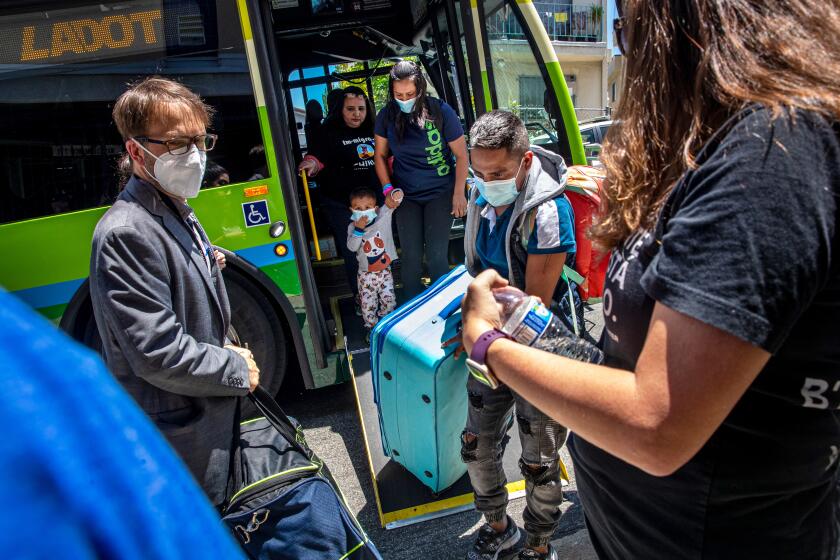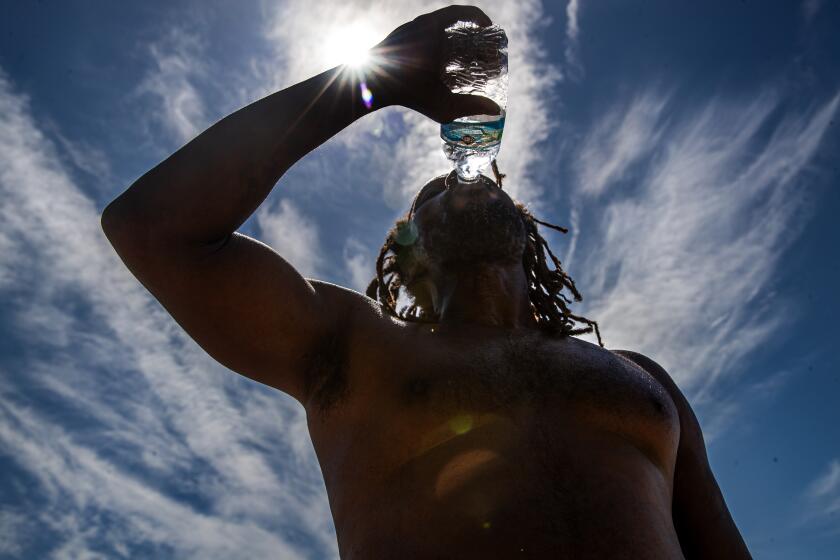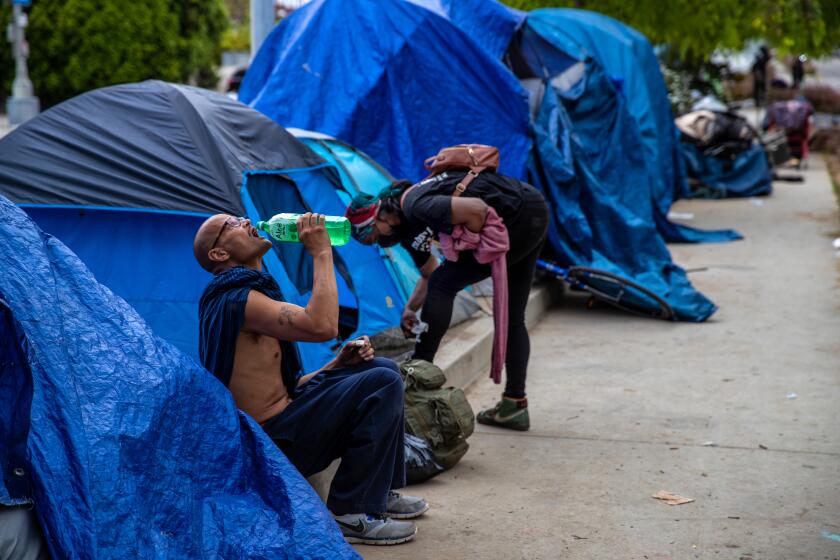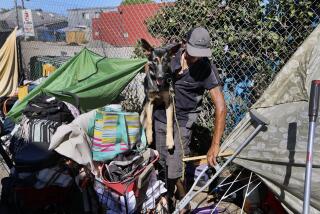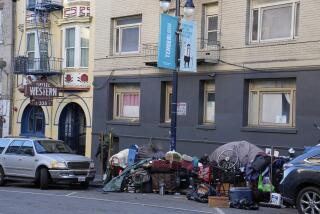Anchorage mayor proposes sending homeless people to Los Angeles this winter
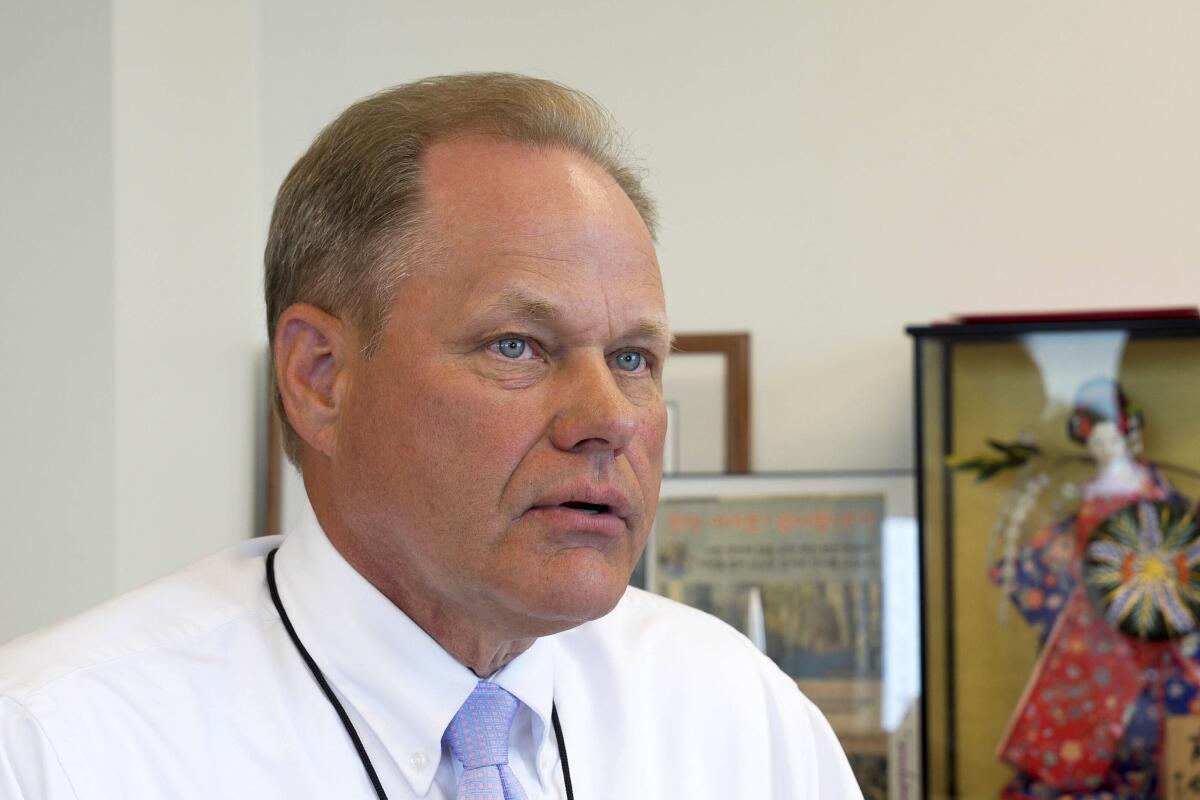
- Share via
People experiencing homelessness in Anchorage, Alaska, may be sent to Los Angeles and other U.S. cities with warmer climates this winter amid a shortage of shelters.
Anchorage Mayor Dave Bronson told reporters during a news conference this week that plane tickets would be purchased for unhoused people to be sent to cities where they have families who can care for them or where the climate is warmer.
“Last year was the most deadly year in history for people who were homeless, and now this coming year with this winter, we’re looking at possibly doubling that,” he said, noting that winters are extremely cold in Anchorage. “I have a moral imperative here and that is to save lives, and if that means giving them a few hundred dollars for an airline ticket to go where they want to go, I’m going to do that.”
No funding has been approved yet for the relocation program, which also operated last year, but Bronson didn’t anticipate any problems locating the funds. He said about 11 people took the offers last year.
“I think a ticket this morning to Los Angeles is 286 bucks, it cost us $100 plus or minus a few dollars every day to house someone, and we don’t have a place to put them in a large shelter this winter,” he said. “And remember, the objective, and it’s sad that we had to get to this, but we’re here to save lives, that’s my job.”
Tuesday’s news conference was held a day after the mayor spoke with the Anchorage Daily News, which first reported about the proposed relocation plan. Bronson’s office did not immediately respond to requests for comment.
Los Angeles County is already facing a shortage of shelter beds while its homeless population continues to grow and as Texas Gov. Greg Abbot has been busing asylum-seeking migrants to L.A. and other “sanctuary” cities across the U.S. About 200 migrants have been sent to Los Angeles since June.
A group of 36 asylum seekers arrived in Los Angeles on Thursday morning after a 25-hour bus ride from Texas.
“Republicans want to tell a false story that Democratic-run cities are falling apart,” said Zach Seidl, a spokesman for Mayor Karen Bass. “But in reality, these ridiculous stunts just show the difference between leaders who confront crises by rolling up their sleeves to address issues and leaders who confront crises by rolling over to shift the problem.”
Los Angeles county has 43,000 shelter beds for the roughly 75,000 people experiencing homelessness in the region, according to county data.
When asked if the relocation program would be viewed as Anchorage sending its homelessness problem elsewhere, Bronson, who is Republican, said other cities had done the same, but he did not elaborate.
Bronson also expressed reluctance to send people outside of the state but said he had “far less than optimal options” after state lawmakers rebuffed a $25-million request to fund a large shelter in Anchorage, which has 40% of the state’s population but 65% of its homeless people.
“The city has spent $161 million on homelessness, and we don’t even have a shelter,” he said. “I think that a large shelter, intensively managed by professionals, would have been a far better idea and created a far better situation than what we have right now.”
In a rural California town, there is little help for the unhoused, who are endangered by extreme heat.
Anchorage recorded 1,760 people staying on the street and in overnight shelters in its 2023 point-in-time census, an increase over the 1,494 counted in 2022.
So far this year, 29 people believed to be homeless died in and around Anchorage, surpassing last year’s record of 24, according to the Anchorage Daily News.
Half of the deaths, the paper reported, occurred after the closure of the mass shelter at the George M. Sullivan Arena, which typically hosts sporting and cultural events.
The city moved dozens of its unhoused people to various areas, including a park six miles away when it closed the mass shelter in May.
As of now, there is no shelter large enough to house people during the winter, when temperatures can drop as low as -31 Fahrenheit between November and March.
L.A. homeless crisis by the numbers: Geographic, demographics and trends
Aside from the arena’s operating costs and it not being an ideal living space for homeless people, Bronson did not provide other reasons as to why the city could not use it once again as a mass shelter for the winter.
Bronson said the arena needed to return to the public realm.
“It needs to be an entertainment venue,” he told reporters. “We need hockey, rock concerts there, we need to get that back to normal.”
More to Read
Sign up for Essential California
The most important California stories and recommendations in your inbox every morning.
You may occasionally receive promotional content from the Los Angeles Times.
